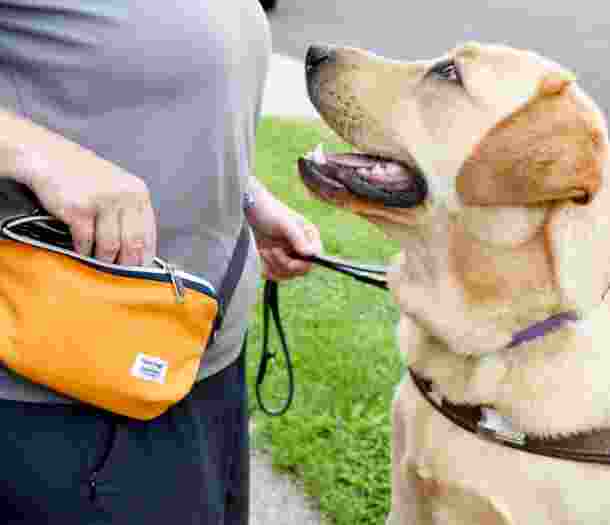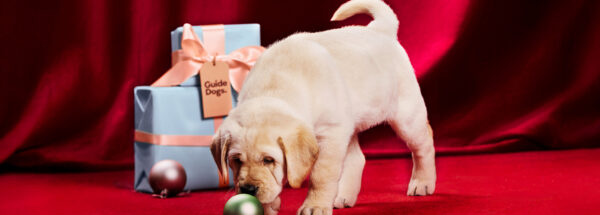On this page:
Making training more rewarding
The process of training Guide Dogs as they journey from pup to partnership is incredibly rewarding—in every sense.
At every stage of a puppy’s development, from their early weeks right through to working with a client long-term, we use a Positive Training toolbox with Positive Reinforcement (PRT) as our primary method.
The technique is based on giving rewards to strengthen the behaviours that we want. It’s all about ensuring the welfare of our dogs while promoting best-practice in their care and training.
All animals—humans included—require motivation to repeat a behaviour. When a behaviour is followed by a pleasurable consequence, it’s more likely to be repeated. We call the pleasurable consequence a “positive reinforcer”; it’s the technical term for food, pats, praise and play when they increase desired behaviours or progress in training.
Positive Reinforcement Training is vital for the ongoing training and development of Guide Dogs, and so are your contributions. We don’t receive any government funding for our Guide Dog training program, so your generous and regular support is essential in helping our puppies graduate and go on to change lives as highly skilled Guide Dogs.
Why does Guide Dogs Victoria use Positive Reinforcement?
There are two main reasons why we use PRT at Guide Dogs Victoria.
- The PRT method is the best technique for training well-bonded, reliable Guide Dogs who enjoy learning.
- The method is aligned with animal welfare values and comes in accordance with the International Guide Dog Federation Standards.
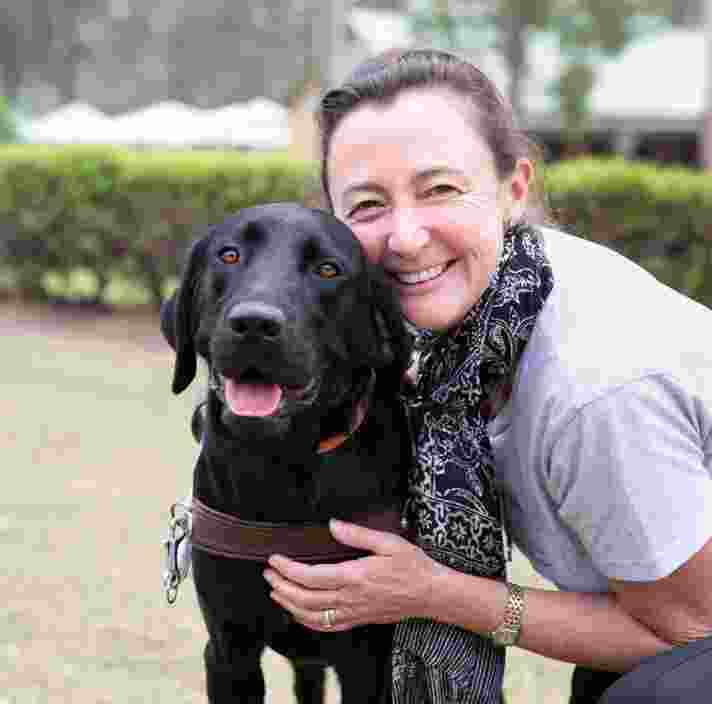
What’s involved in the Positive Reinforcement Toolbox?
The ‘toolbox’ refers to the selection of positive reinforcements we use to reward Guide Dogs for good behaviour in training.
The methods can change over time and can be tailored to meet the unique personalities or preferences of each individual Guide Dog, but there are a couple of things we keep in mind when applying PRT for every pup.
Food Is usually the fastest and most reliable initial positive reinforcer, for learning new skills, or new situations., but positive reinforcement involves more than food.
Although there are many reinforcements in the toolbox, we find snacks and treats are the most effective reward for pups learning new skills, or in trust and bonding situations. Studies prove conclusively that food is the strongest primary reinforcer for most dogs in training. Food is fast and reliable—from an evolutionary standpoint, food is linked to strength and physical conditioning, so it’s a natural motivation for most growing pups.
Once they know that food is potentially on the table (so to speak) training pups keenly take on new challenges for the chance to earn such a high reward. Food is ideal in skills development or new personal bonding scenarios, and it’s also a great way to quickly build a ‘bank of trust’. Our dogs also learn to earn -a good work ethic that means they can make reliable decisions when working with their clients. We use the meals for daily training and motivation so that our dogs do not become overweight.
There is skill required in using food as an effective reward. Our Puppy Raisers receive thorough training so they can reward cleanly and understand the subtle differences between ‘rewarding’ and ‘bribing’. We can also use the Positive Reinforcement method to train pups and dogs not to grab at, or become too distracted by, food.
Secondary reinforcers
We always reinforce every dog with pats and praise, irrespective of whether we use food rewards in training.
In addition to food, praise and pats are known as ‘secondary reinforcers’. They may not initially be as strong a motivator as food rewards, but they can build into strong motivators as dogs develop relationships with specific people: over time, your dogs will learn the value and meaning of pats and praise. We always reinforce every dog with pats and praise, irrespective of whether we use food rewards in training.
- Positive reinforcement and training is a continual process. Learning is always occurring in the brain. After the initial training involved in skills development and bonding exercises, we transition dogs onto intermittent food rewarding, or pats and praise only, to keep their skills sharp over time.
- Methods of reinforcement can change over time. We have a range of different techniques for motivating dogs that respond differently to common reinforcers. Some dogs are motivated by retrieval play more so than treats; some dogs are ‘body sensitive’ and don’t like being patted.
Throughout training, it’s essential that we understand and accommodate a dog’s motivations or sensitivities in any given situation. Our trainers are experts at reading each dog’s body language and communication techniques, and have the skills to switch between reinforcement rewards to encourage the right behaviour.
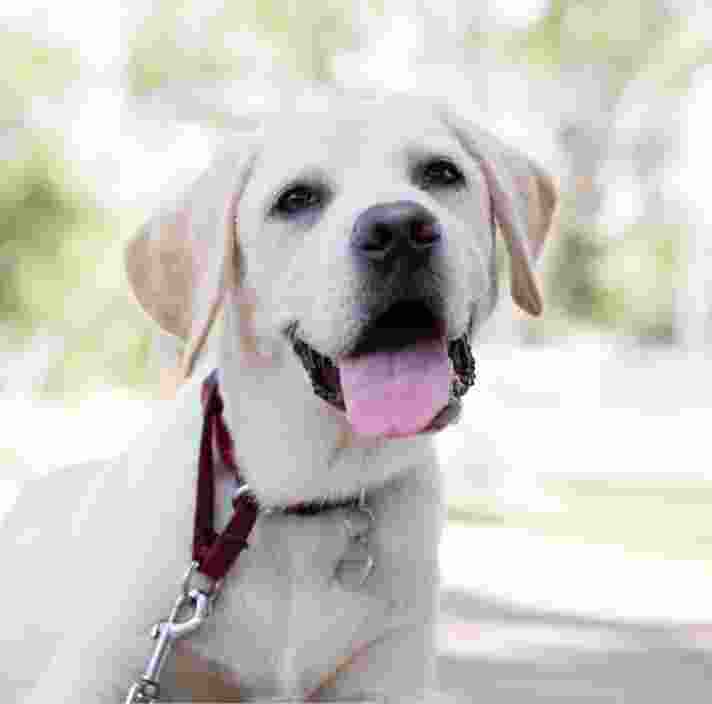
How we apply PRT at Guide Dogs Victoria.
Our pups are encouraged with food-based PRT at all stages because they are constantly embracing new challenges in training.
The lead up to Guide Dog graduation is an extended period of rapid experience acquisition, and we take every step to ensure the process is overwhelmingly positive. Rewards-based training means the dogs love to learn and are actively motivated to participate in skills programs.
Our trainers are experts; they are highly skilled at reading a dog’s body language and choosing the most appropriate reward for that moment. Trainers use combinations of positive reinforcement and differential reinforcement to teach the dogs safe guiding skills.
Our Guide Dog Mobility Instructors are experts at transitioning the dog to the client and preparing pups and people for long-term relationships. This includes providing appropriate reinforcement training skills to the person, to ensure pups and mature Guide Dogs can maintain and learn new skills well into the future.
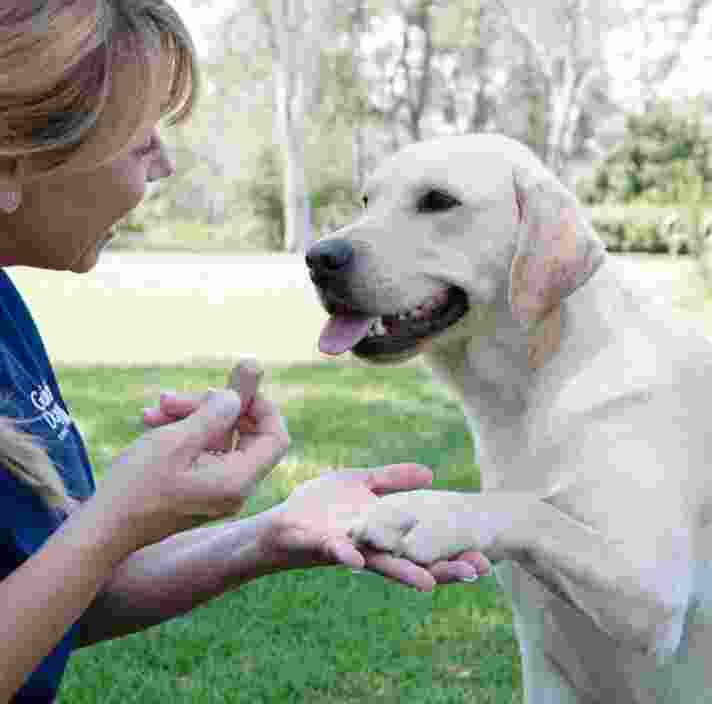
Ready to continue?
Seems like you have filled this form earlier. Let’s pick up where you left off.
